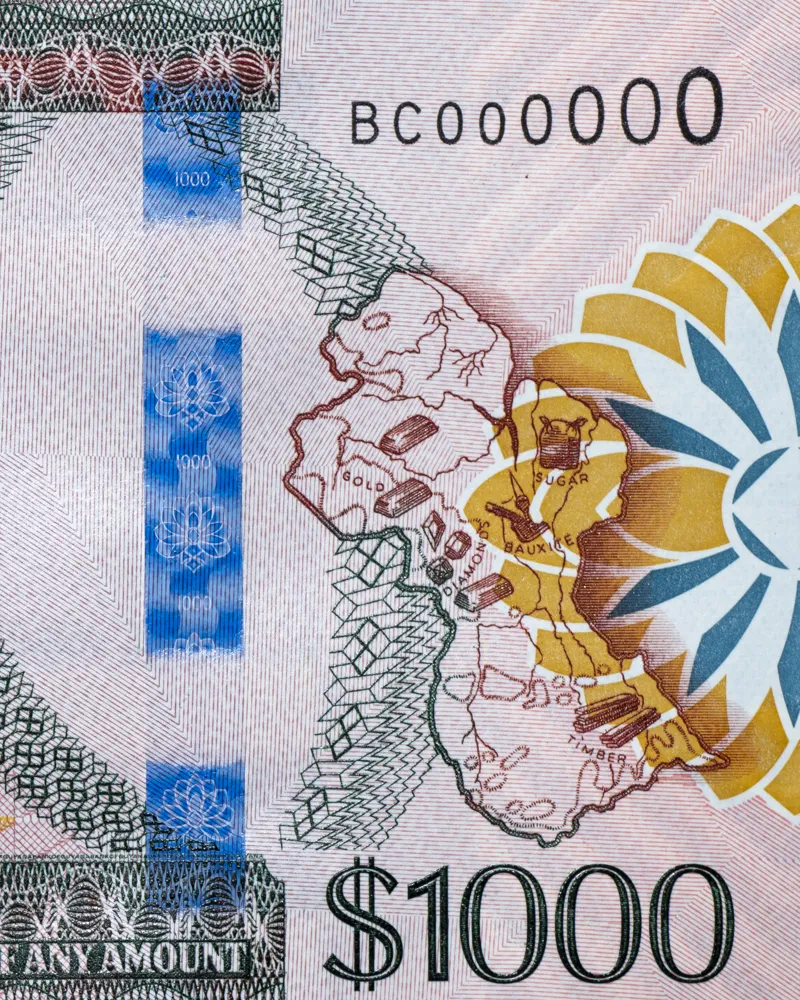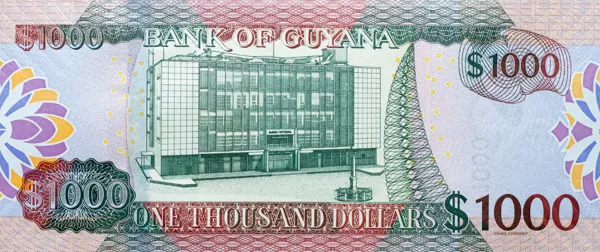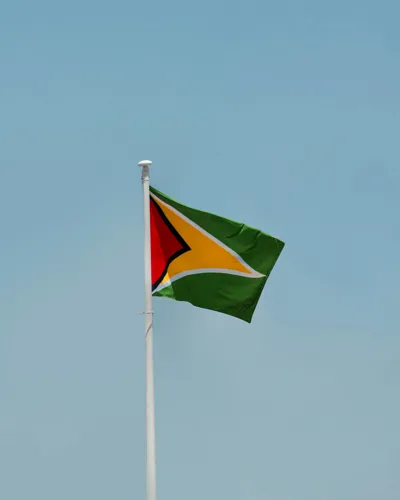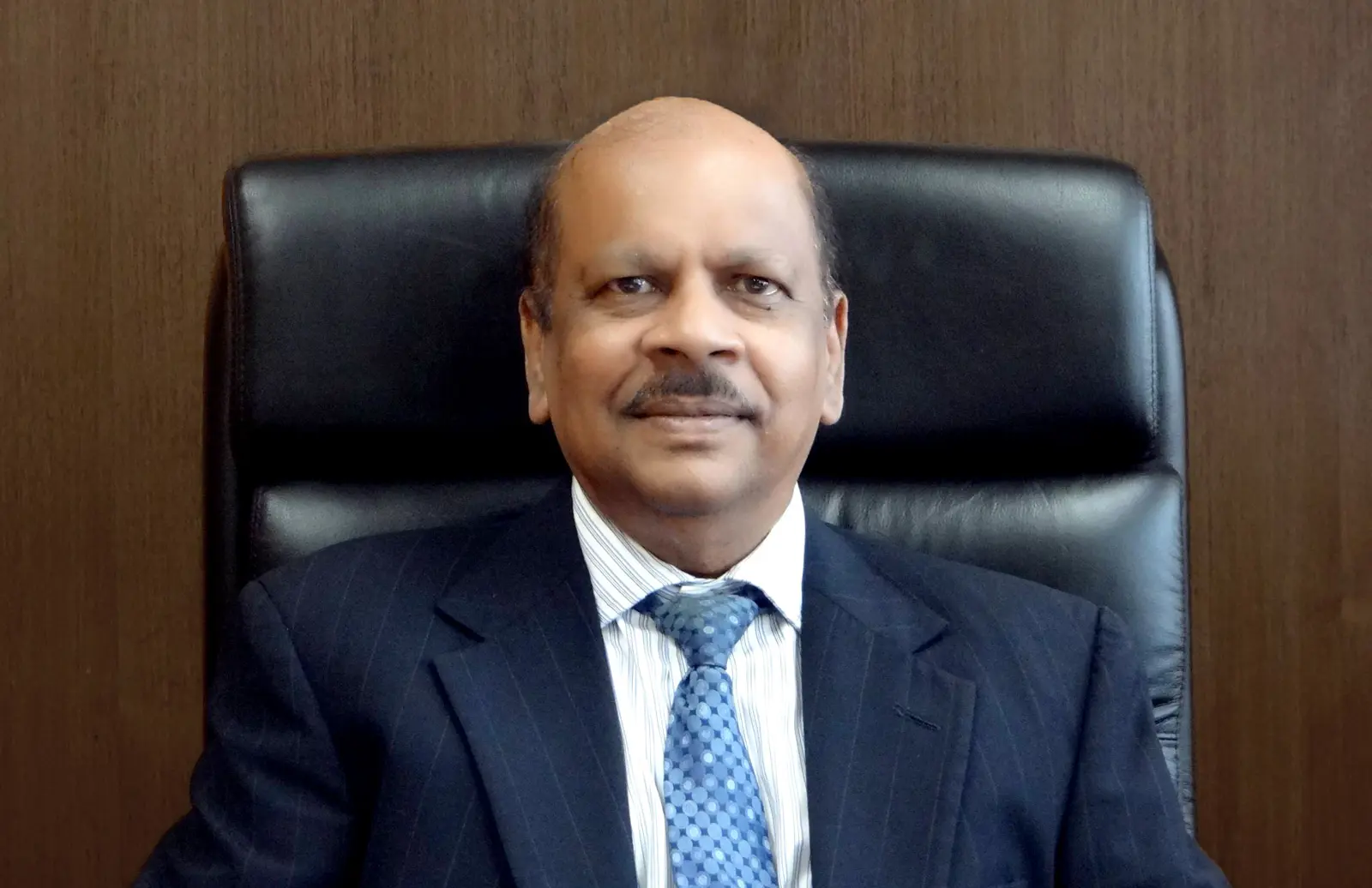After Upgrading the 1,000 Dollar Banknote
SHARP DECREASE OF COUNTERFEITS IN GUYANA

CHALLENGES FOR THE BANK OF GUYANA
As one of the fastest growing economies in the world, Guyana today gets billions in revenues from a booming offshore oil and gas industry. The new source of income is welcomed but the past years have also come with challenges for the Bank of Guyana. With a large rural population and a highly cash-based economy, a growing number of counterfeited banknotes compelled the bank to add more advanced security features to its 1,000 dollar banknote. After the upgrade in 2019, the number of counterfeits dropped dramatically.
CRANE MICRO-OPTICS REPLACING HOLOGRAMS & COLORSHIFT THREADS
“People do business day and night and counterfeiting causes financial losses for both the affected individuals and the commercial banks. The 1,000 dollar note is very well used and since the new upgraded version is so difficult to replicate, we expect it to be in circulation for a long time”, says Dr. Gobind Ganga, the Governor of the Bank of Guyana.
The upgraded 1,000 GYD (Guyana Dollars) banknote was issued on March 4, 2019, with a 6 mm RAPID® micro-optic security thread from Crane Currency replacing the previous holographic stripe and colorshift thread.
The blue micro-optic feature displays fluid and highly visible movement behind the national flower the Victoria Regia Lily. With only a slight tilt of the banknote, high contrast bands in the RAPID feature move up and down behind the denomination ‘1000’ as the flower petals shimmer in blue and white.

UPGRADING BANKNOTES TO STAY AHEAD OF COUNTERFEITING
There are many reasons why central banks create wholly new series of banknotes, including to establish new denominations, e.g. in response to inflation or from a desire to change the banknotes political or cultural themes. But whatever the reason, increasing banknote security is always an important consideration.
A growing number of central banks are therefore deciding to upgrade one or more denominations with advanced security technology to stay ahead of the counterfeiters while keeping the major motifs largely unchanged. The approach avoids incurring the program costs of designing an entirely new series and positive results are achieved more quickly. Banknotes with
upgraded security features can extend the life of the notes for several additional years while addressing the primary concern of security.
The Bank of Guyana followed the introduction of Crane Currency’s micro-optic security thread RAPID in 2014. Since then, central banks around the world and in particular the Americas have selected Crane’s micro-optics as a key anti-counterfeiting technology, for example across all higher denominations of the new series of Mexico Pesos and US$100.
The micro-optic features are unique and designed entirely for securing banknotes. This means that a would-be counterfeiter has no starting point, no commercial materials available to simulate the feature credibly.
“That was the major decision for going with RAPID. The old banknote was too easy to counterfeit, and we had to replenish and make new notes. Crane has worked with us all along – and what we want is what we get from them,”
–Dr. Gobind Ganga
SECURITY FEATURES FOR ALL LIGHTING CONDITIONS
Counterfeiting is a major problem in most developing countries and the challenges are often both domestic and international. The internet is connecting specialized suppliers of convincing-looking materials with local counterfeiters who know how to put basic print equipment and other commercial devices to work producing very realistic fakes.
The problems increase in countries like Guyana with a rural and highly cash-based population. People do business around the clock and the
transactions are made in all lighting conditions. Not being able to quickly identify a counterfeited note means financial losses for the individual – and so the introduction of the upgraded 1,000 dollar note was also very well received by the local commercial banks.
The current series of banknotes in Guyana include 20, 50, 100, 500, 1,000 and 5,000 Guyana Dollars. A total of 14,3 million 1,000 dollar banknotes are currently in circulation, including the old series that soon will be taken out.


TRANSPARENCY & REGIONAL KNOWLEDGE-SHARING
Transparency is a term the Governor uses frequently. There is a comradery among the regional central bankers and different committees meet regularly without any vendors present. Best practices and learnings are then shared openly between the countries.
A well discussed topic is matching the local environment with a suitable set of banknote security features that are easily detectable in any lighting conditions and difficult to replicate. Print and substrate quality are also important to ensure that the printed features remain on the substrate and not degrade in circulation.
Looking back, Dr. Gobind Ganga has several key learnings from the process of upgrading banknotes with new and more advanced security features.
“Keep an open mind and see what technology is available out there. Who can provide the technology that you need and how important are the services? Since relationships depend on trust, also consider the individuals that will be working with you on the project. If a problem occurs along the way, you need a vendor that can fix it,” he says.
GUYANA - AMONG THE FASTEST GROWING COUNTRIES
Guyana is located on the northern mainland of South America with the capital city Georgetown. With a projected 16.39 percent growth in 2021 and 46.39 in 2022, Guyana is among the fastest growing economies in the world. Its GDP of USD 5.76 billion in 2020 is expected to expand to USD 7.25 billion in 2021 – and then enter the double digits by 2023.
The economy has traditionally been very diverse. The country is covered with dense forests and is home to fertile agricultural lands and abundant natural resources with gold, bauxite, sugar, rice, timber and shrimp among its leading exports.
But things changed rapidly in 2015 when large fields of oil and gas were found outside the coast. At the time of production start in 2019, around 100,000 barrels of oil were expected to be extracted every day and the levels have since increased.
For a country with just around 740,000 citizens within 215,000 square kilometers, the new emerging oil and gas sector now represents billions in revenues.
“I see the oil and gas income as a windfall. Our traditional sectors will still be in focus, and we will continue to develop and keep an eye on the employment rates. The growth must be sustainable – we don’t want to have the ‘Dutch disease’,” says Dr. Gobind Ganga.



FACTS ABOUT GOVERNOR, DR. GOBIND GANGA
Dr. Gobind Ganga completed his BA Degree in Economics and Administrative Studies at the University of Winnipeg and his MA and PhD Degrees in Economics at the University of Manitoba during the 1980s.
In 1995, Dr. Ganga was appointed Director of the Research Department at the Bank of Guyana. He held that position until November 2003, when he was appointed Alternate Executive Director at the World Bank in Washington, D.C. In June 2005, Dr. Ganga was appointed Deputy Governor at the Bank of Guyana and on December 2, 2014, he was appointed Governor of Bank of Guyana.
Dr. Ganga has a wealth of Central Banking experience. He has written and published many articles on a wide variety of Economic issues, including Monetary Policy and Macroeconomics.
